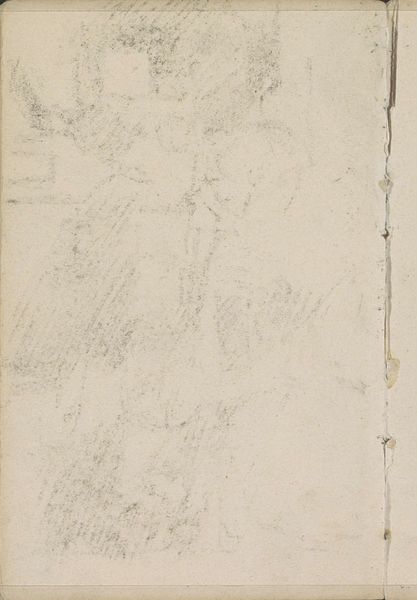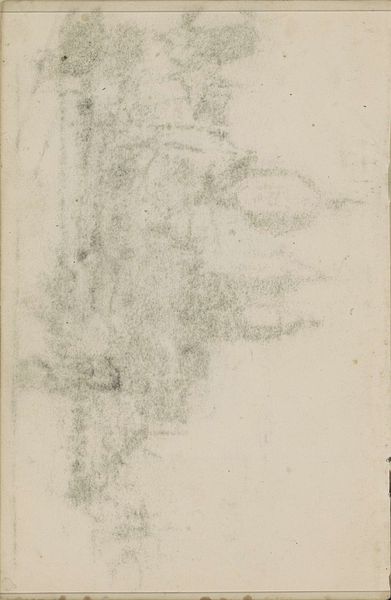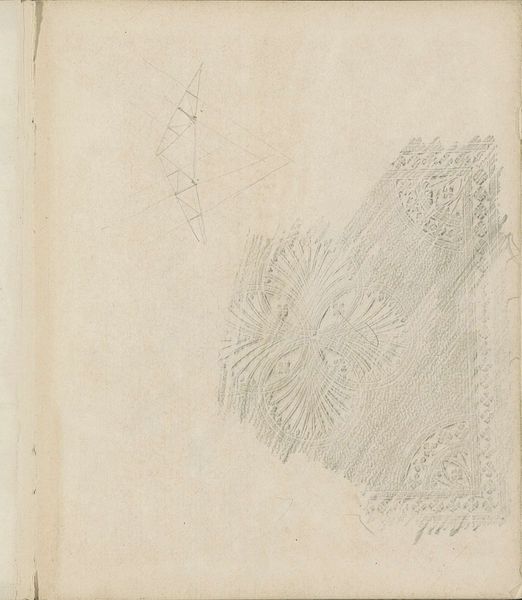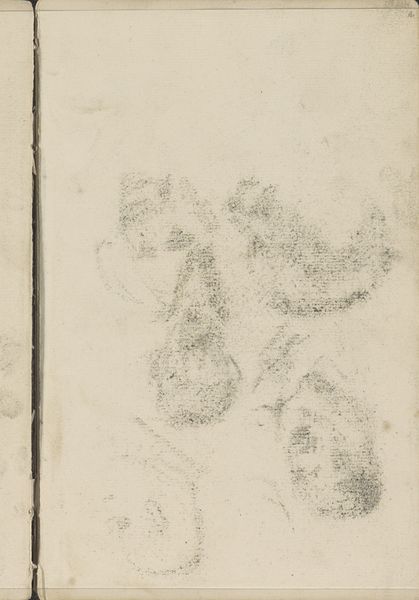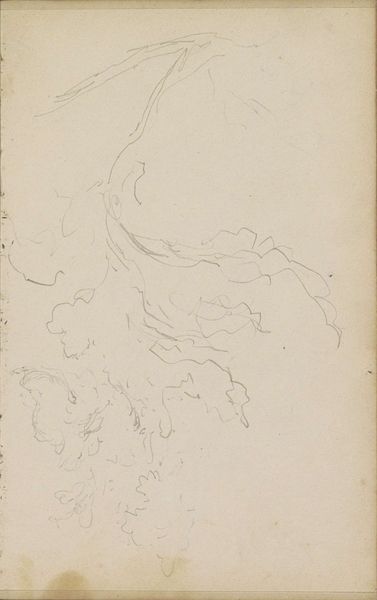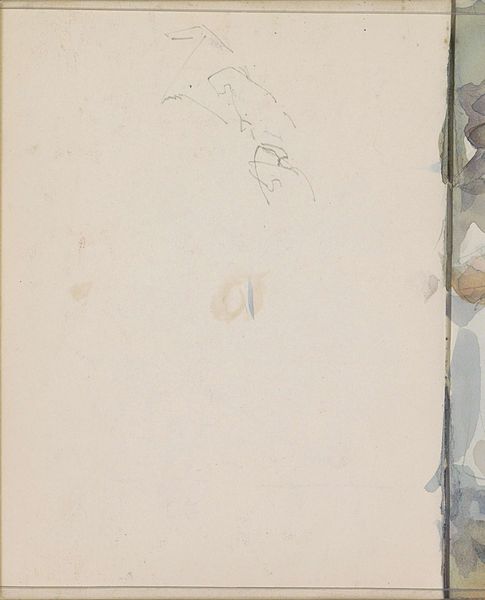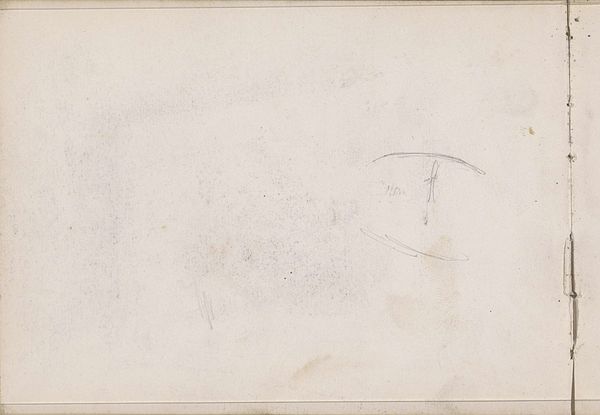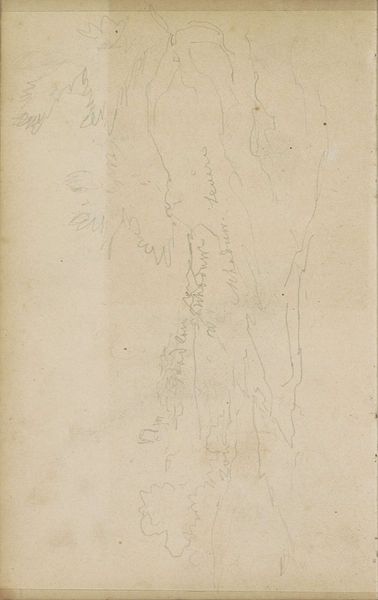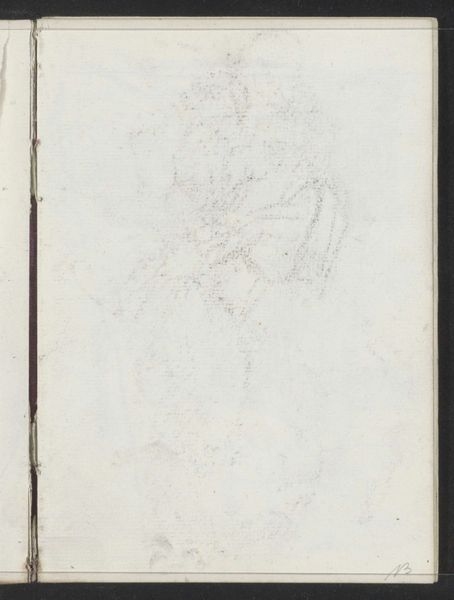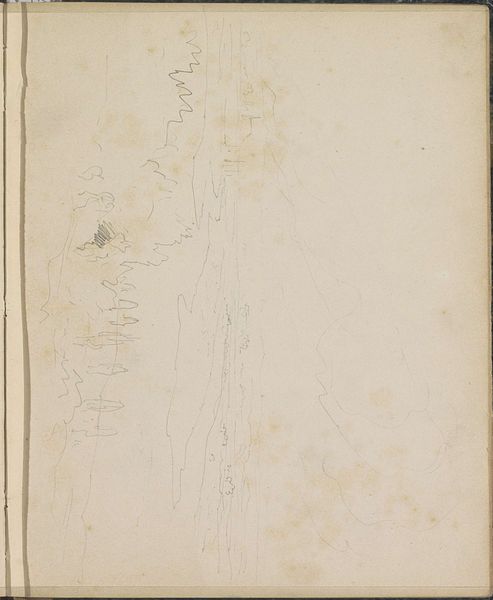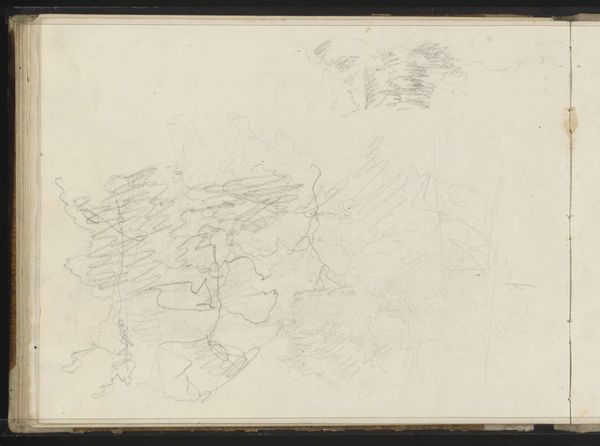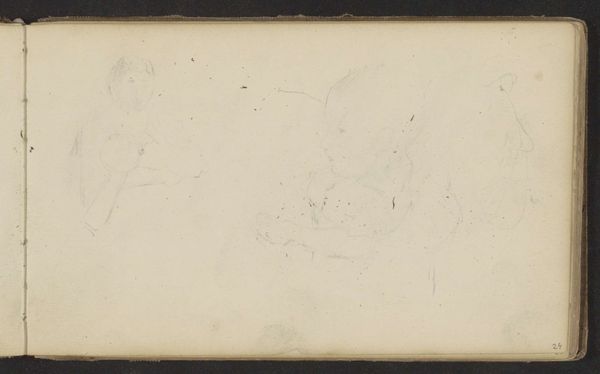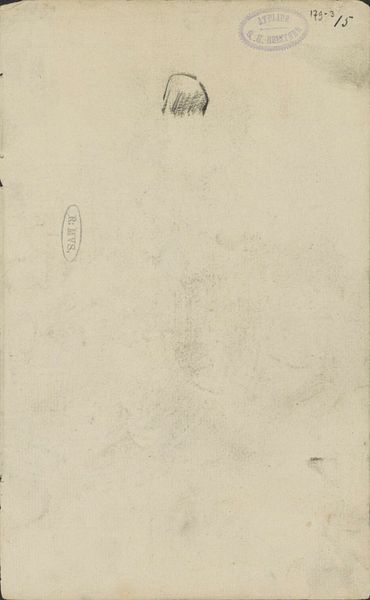
Copyright: Rijks Museum: Open Domain
Curator: Here we have Johannes Tavenraat's "Wolken," dating from 1839 to 1872. It's a drawing on paper, rendered with delicate pencil strokes. Editor: My first impression is one of ethereality; it feels like a fleeting moment captured. There’s a lightness and impermanence to these clouds. Curator: Absolutely. Tavenraat was working within the Romantic tradition. The movement valued emotional experience, subjectivity, and particularly sought to reflect the sublime aspects of nature. He gives us a sky that almost feels infinite. Given this context, how might this ethereal quality reflect societal understandings about nature's power at the time? Editor: It’s interesting to think about the paper itself here. The use of such fragile material mirrors the very transient nature of clouds. And the labour... the hours spent with a simple pencil meticulously rendering these atmospheric forms. This wasn't just about observing; it was about participating in a slow, manual process to grasp something intangible. Also the economic aspect must be taken into account: good quality paper wasn't cheap back then and therefore reserved for certain strata. Curator: The annotations within the drawing are also thought provoking. They situate Tavenraat in an act of not only portraying nature, but in studying it, trying to categorize its ephemeral quality. Cloud formations themselves resist rigid classification. Is there a push-pull here between subjective experience and objective scientific categorization, hinting at a human need to exert control over something inherently ungovernable? Editor: That struggle, between imposing order and accepting flux, feels relevant even now. I keep coming back to the humbleness of the materials—paper, pencil—transforming them into a window on something boundless. How often do we stop and actually watch the clouds these days? Tavenraat forces us to confront the raw materials as the ultimate medium. Curator: This examination truly challenges the viewer to engage deeply with shifting forms of the sublime, asking pertinent questions. Editor: Precisely. The work urges a material consciousness in us all, about seeing and observing.
Comments
No comments
Be the first to comment and join the conversation on the ultimate creative platform.
